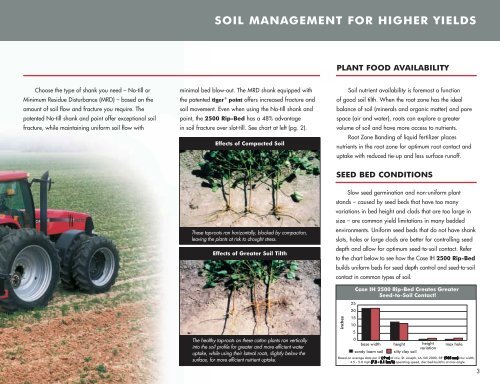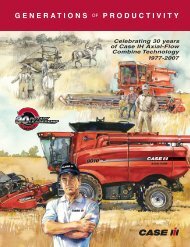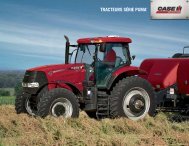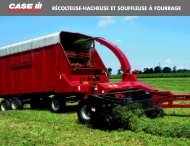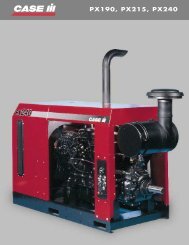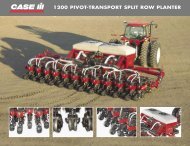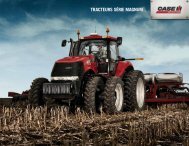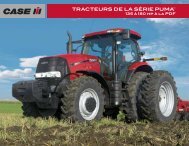yield-till - Centre Agricole.ca
yield-till - Centre Agricole.ca
yield-till - Centre Agricole.ca
Create successful ePaper yourself
Turn your PDF publications into a flip-book with our unique Google optimized e-Paper software.
SOIL MANAGEMENT FOR HIGHER YIELDS<br />
PLANT FOOD AVAILABILITY<br />
Choose the type of shank you need – No-<strong>till</strong> or<br />
Minimum Residue Disturbance (MRD) – based on the<br />
amount of soil flow and fracture you require. The<br />
patented No-<strong>till</strong> shank and point offer exceptional soil<br />
fracture, while maintaining uniform soil flow with<br />
minimal bed blow-out. The MRD shank equipped with<br />
the patented tiger ® point offers increased fracture and<br />
soil movement. Even when using the No-<strong>till</strong> shank and<br />
point, the 2500 Rip-Bed has a 48% advantage<br />
in soil fracture over slot-<strong>till</strong>. See chart at left (pg. 2).<br />
Effects of Compacted Soil<br />
Soil nutrient availability is foremost a function<br />
of good soil tilth. When the root zone has the ideal<br />
balance of soil (minerals and organic matter) and pore<br />
space (air and water), roots <strong>ca</strong>n explore a greater<br />
volume of soil and have more access to nutrients.<br />
Root Zone Banding of liquid fertilizer places<br />
nutrients in the root zone for optimum root contact and<br />
uptake with reduced tie-up and less surface runoff.<br />
SEED BED CONDITIONS<br />
These tap-roots ran horizontally, blocked by compaction,<br />
leaving the plants at risk to drought stress.<br />
Effects of Greater Soil Tilth<br />
Slow seed germination and non-uniform plant<br />
stands – <strong>ca</strong>used by seed beds that have too many<br />
variations in bed height and clods that are too large in<br />
size – are common <strong>yield</strong> limitations in many bedded<br />
environments. Uniform seed beds that do not have shank<br />
slots, holes or large clods are better for controlling seed<br />
depth and allow for optimum seed-to-soil contact. Refer<br />
to the chart below to see how the Case IH 2500 Rip-Bed<br />
builds uniform beds for seed depth control and seed-to-soil<br />
contact in common types of soil.<br />
The healthy tap-roots on these cotton plants ran verti<strong>ca</strong>lly<br />
into the soil profile for greater and more efficient water<br />
uptake, while using their lateral roots, slightly below the<br />
surface, for more efficient nutrient uptake.<br />
3


